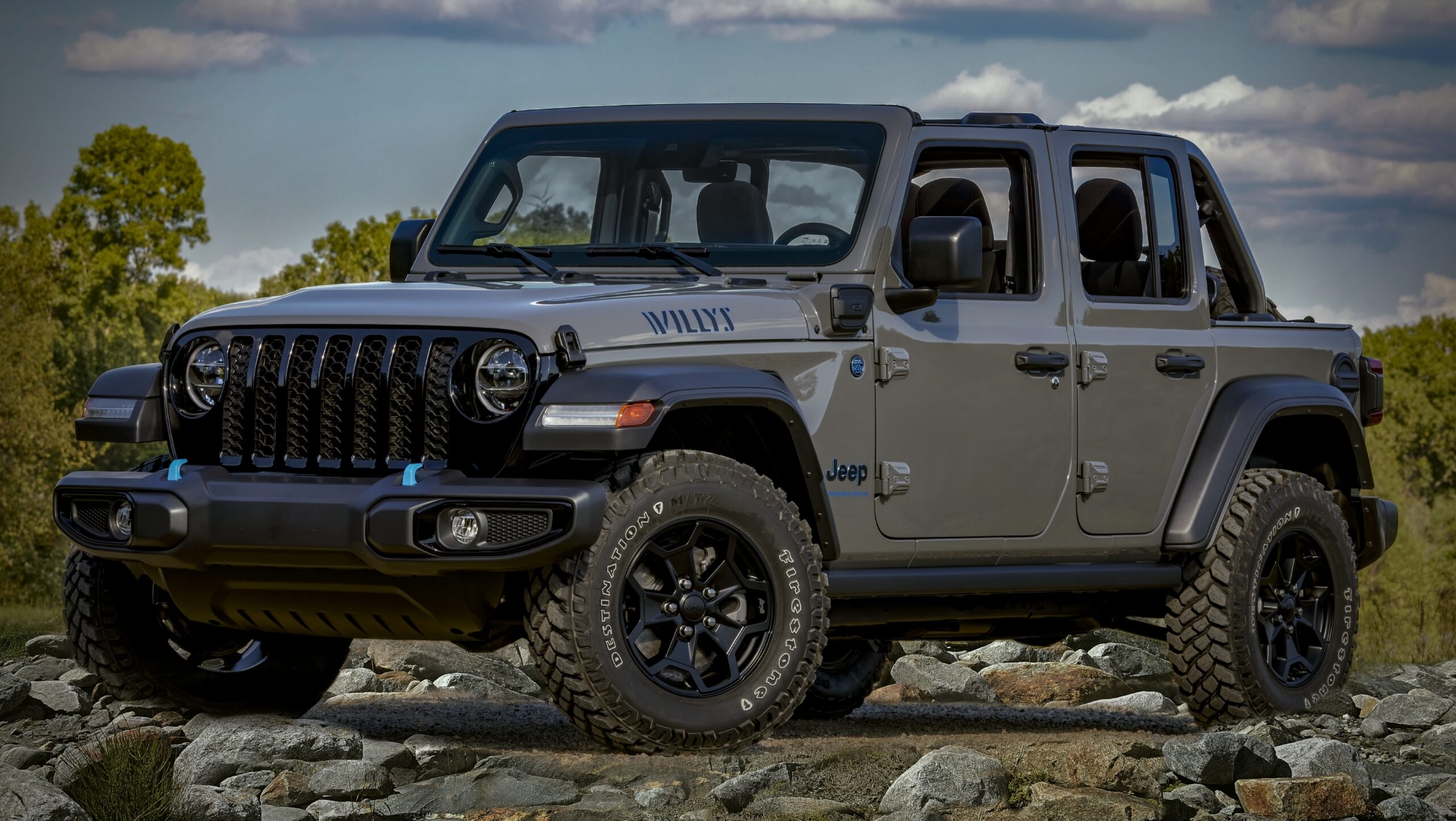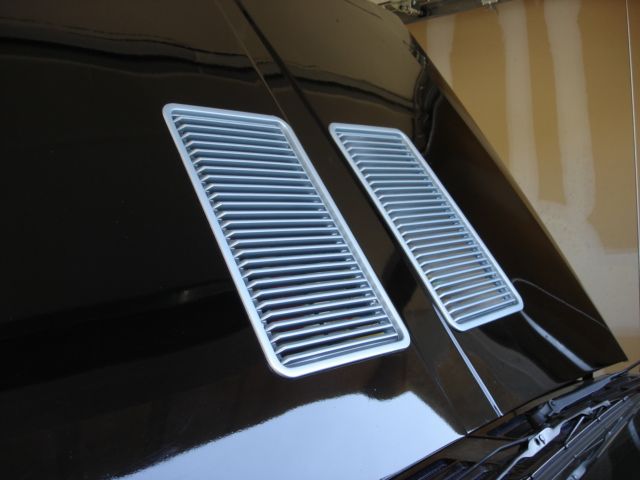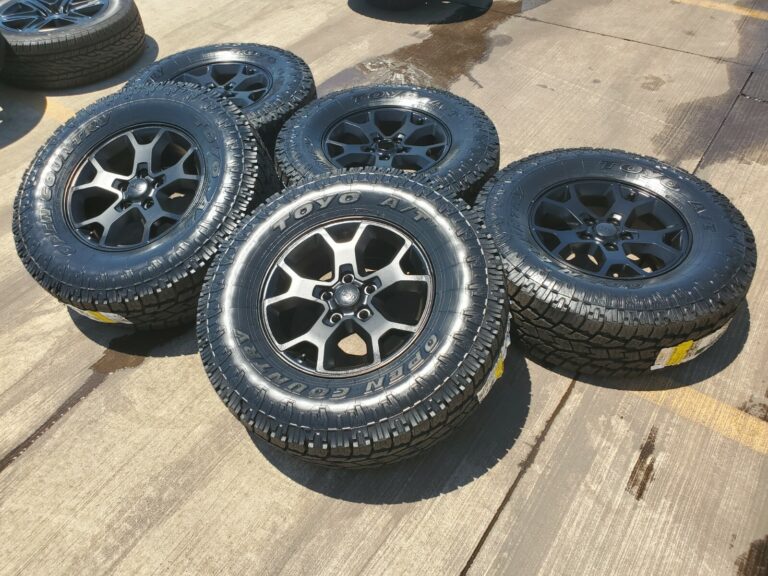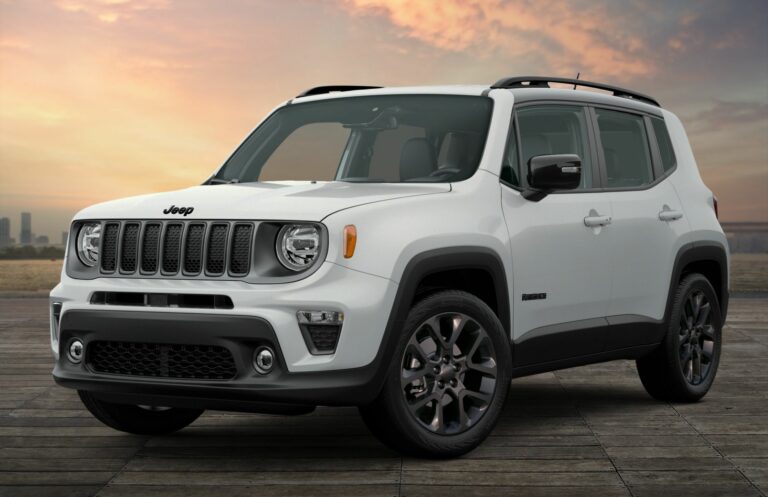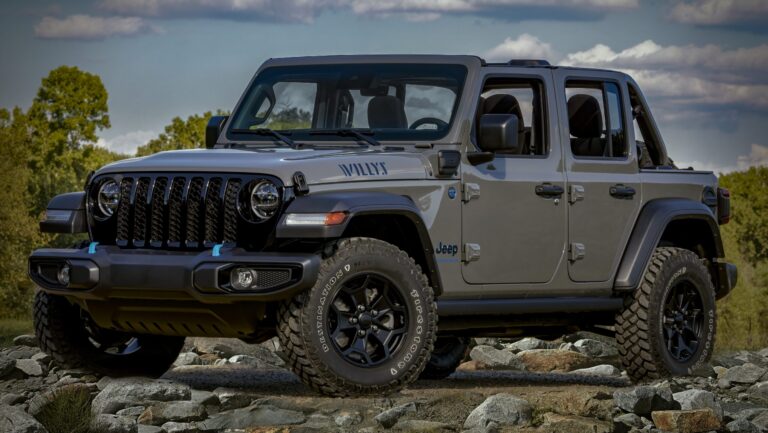Jeep CJ7 Bumpers For Sale: A Comprehensive Guide to Upgrading Your Classic Off-Roader
Jeep CJ7 Bumpers For Sale: A Comprehensive Guide to Upgrading Your Classic Off-Roader /jeeps.truckstrend.com
The Jeep CJ7, an icon of American off-roading, represents an era of rugged simplicity and unparalleled adventure. Produced from 1976 to 1986, this venerable vehicle continues to capture the hearts of enthusiasts worldwide. Whether you own a meticulously restored showpiece or a trail-hardened beast, maintaining and upgrading your CJ7 is a passion project. Among the most crucial components to consider for both aesthetics and functionality are its bumpers. Far more than just protective barriers, Jeep CJ7 bumpers are pivotal elements that define your vehicle’s stance, enhance its capabilities, and ensure its longevity. This comprehensive guide delves into the world of Jeep CJ7 bumpers for sale, offering insights, advice, and practical information to help you make the best choice for your classic rig.
Why Upgrade or Replace Your CJ7 Bumper?
Jeep CJ7 Bumpers For Sale: A Comprehensive Guide to Upgrading Your Classic Off-Roader
The original equipment manufacturer (OEM) bumpers on a CJ7 were functional for their time, but decades of use, exposure to the elements, and the demands of modern off-roading often render them inadequate. Upgrading or replacing your CJ7 bumper offers a multitude of benefits:
- Enhanced Protection: The primary function of a bumper is to protect the vehicle’s vital components (engine, radiator, chassis) during impacts, whether from minor fender benders on the road or challenging obstacles on the trail. Aftermarket bumpers are typically constructed from much stronger materials and designs than their OEM counterparts, offering superior defense against damage.
- Improved Functionality: Modern aftermarket bumpers are designed with utility in mind. They often incorporate features like integrated winch mounts, D-ring shackle points for recovery, provisions for auxiliary lighting, and even integrated tire carriers or fuel can mounts. These additions dramatically expand your CJ7’s utility, especially for serious off-road adventures.
- Aesthetic Transformation: A new set of bumpers can dramatically alter the look of your CJ7, giving it a more aggressive, modern, or classic customized appearance. Whether you prefer a sleek, minimalist stubby bumper or a robust, full-width design with a brush guard, the right bumpers can truly personalize your vehicle.
- Corrosion and Damage Replacement: Many original CJ7 bumpers suffer from rust, dents, or structural fatigue over time. Replacing them not only addresses these cosmetic issues but also restores structural integrity, ensuring your vehicle is safe and sound for years to come.
- Increased Safety: Robust bumpers can offer better protection for occupants in a low-speed collision and can be designed to minimize damage to the vehicle’s frame. For off-roaders, recovery points integrated into the bumper are crucial for safe winching and towing operations.

Types of Jeep CJ7 Bumpers Available
The market for Jeep CJ7 bumpers is diverse, offering a range of styles, materials, and functionalities to suit every need and budget. Understanding the different types is key to making an informed decision.
Front Bumpers
Front bumpers are crucial for approach angle, front-end protection, and accommodating recovery gear.
- Stock/OEM Replacement Bumpers: These are designed to mimic the original factory bumpers, offering a classic look and basic protection. They are ideal for restorations or those who prefer a minimalist, period-correct aesthetic without heavy off-road demands.
- Tube Bumpers: Characterized by their tubular construction, these bumpers are often lighter than plate steel designs and excel at maximizing approach angles. They offer good protection against minor impacts and are popular among rock crawlers due to their sleek profile and ability to slide over obstacles. Many include integrated light tabs or small winch plates.
- Plate Steel Bumpers (Heavy Duty): These are the workhorses of the aftermarket bumper world. Constructed from thick, laser-cut steel plates, they offer maximum protection against impacts. Most heavy-duty plate bumpers feature integrated winch plates, numerous D-ring shackle mounts, and cutouts for auxiliary fog lights or turn signals. They are robust, durable, and built for serious off-road abuse.
- Stubby Bumpers: A variation of the plate steel bumper, stubby bumpers are characterized by their narrow width, extending only as wide as the frame rails or slightly beyond. This minimalist design maximizes tire clearance and approach angles, making them exceptionally popular for extreme off-roading where every inch matters. They often come with winch mounts and D-ring tabs.
- Full-Width Bumpers with Brush Guards: These bumpers offer comprehensive front-end protection, extending across the entire width of the vehicle and often incorporating an integrated "grille guard" or "brush guard" that wraps up to protect the grille and headlights. Ideal for overland travel or heavily wooded trails, they protect against animal strikes, branches, and other trail hazards.
Rear Bumpers
Rear bumpers are essential for departure angle, protecting the vehicle’s rear, and often integrating crucial utility features.
- Stock/OEM Replacement Rear Bumpers: Similar to their front counterparts, these offer a classic look and basic protection. They may or may not include a receiver hitch.
- Heavy Duty Plate Steel Rear Bumpers: Built for durability, these bumpers typically include a robust receiver hitch for towing and multiple D-ring shackle points for rear recovery. They provide significant protection for the vehicle’s rear quarter panels and fuel tank area.
- Rear Bumper with Tire Carrier: For CJ7 owners running oversized tires (31 inches or larger), a rear bumper with an integrated swing-out tire carrier is almost a necessity. This moves the spare tire from the tailgate (which can warp or break under the weight of a larger tire) to a strong, frame-mounted carrier. Many carriers also offer mounts for jerry cans, Hi-Lift jacks, or other trail accessories.
- Wrap-Around/Corner Protection Bumpers: Some rear bumper systems extend around the corners of the vehicle, offering enhanced protection to the rear quarter panels, which are vulnerable during tight maneuvers on trails.
Materials and Finishes
- Steel: The most common material for aftermarket bumpers due to its strength, durability, and relatively lower cost. Steel bumpers are heavy but offer maximum protection. They are typically powder-coated for corrosion resistance.
- Aluminum: A lighter alternative to steel, aluminum bumpers reduce overall vehicle weight, which can improve fuel economy and reduce strain on suspension components. While strong, aluminum is generally more expensive than steel and may not offer the same ultimate impact resistance. They are naturally corrosion-resistant.
- Finishes: Most bumpers come with a durable powder-coat finish (typically black) for excellent corrosion resistance and a clean look. Some manufacturers offer bare steel bumpers, allowing you to custom paint or coat them to match your vehicle’s theme. Chrome bumpers are also available for a classic, show-vehicle aesthetic.
Key Features and Considerations When Buying
Choosing the right bumper involves more than just picking a style. Consider these crucial factors:
- Material and Durability: Decide between steel and aluminum based on your priorities for strength, weight, and budget.
- Winch Compatibility: If you plan to run a winch, ensure the front bumper has an integrated winch plate and is rated for the winch’s pulling capacity.
- Recovery Points: Look for sturdy D-ring shackle mounts. These are essential for safe vehicle recovery.
- Lighting Options: Many bumpers come with pre-drilled holes or integrated mounts for auxiliary lights (fog lights, light bars, cube lights). Plan your lighting needs accordingly.
- Tire Carrier: If you have or plan to install oversized tires, a rear bumper with a robust tire carrier is a must. Check the carrier’s weight rating.
- Approach/Departure Angles: For off-roaders, how much the bumper extends past the vehicle’s tires and body impacts the "approach angle" (front) and "departure angle" (rear). Shorter, more angled bumpers improve these metrics, allowing you to clear obstacles more easily.
- Weight: Heavy bumpers add significant weight to your CJ7, which can affect suspension performance, ride quality, and fuel economy. You might need to upgrade your suspension (heavier springs, shocks) to compensate for the added weight, especially if adding other heavy accessories.
- Installation: Most aftermarket bumpers are designed as direct bolt-on replacements, but some may require minor drilling or modification. Verify the installation process before purchase.
- Budget: Prices vary widely based on material, features, brand, and complexity. Set a realistic budget before you start shopping.
- Brand Reputation: Stick with reputable brands known for quality and durability in the off-road community. Brands like Smittybilt, Rugged Ridge, Bestop, Warn, and Poison Spyder are well-regarded.
- Aesthetics: Ultimately, the bumper should complement the overall look of your CJ7 and reflect your personal style.
- Legal Compliance: Check local regulations regarding bumper height, projection, and integrated lighting, especially if you plan to drive on public roads.
Where to Find Jeep CJ7 Bumpers For Sale
The market for CJ7 parts is robust, and finding bumpers is relatively easy:
- Online Retailers: Large online off-road parts suppliers like Quadratec, ExtremeTerrain, 4 Wheel Parts, and Morris 4×4 Center offer extensive selections of CJ7 bumpers from various manufacturers. Manufacturer websites (e.g., Smittybilt, Warn) also list their products.
- Specialty Off-Road Shops: Your local 4×4 or off-road specialty shop might have a selection on hand or can order specific bumpers for you. They can also offer installation services and expert advice.
- Used Market: Websites like eBay, Craigslist, and Facebook Marketplace, as well as dedicated Jeep forums and classifieds, are excellent places to find used bumpers. You can often find good deals, but inspect used items thoroughly for rust, damage, or structural integrity issues before purchasing.
- Jeep Swap Meets and Car Shows: These events are fantastic for finding unique, vintage, or custom-fabricated bumpers, and you can often haggle on prices.
Installation and Maintenance Tips
Installation (General Guidelines):
- Gather Tools: You’ll typically need a socket set, wrenches, a torque wrench, jack stands, and possibly a floor jack.
- Safety First: Always work on a level surface, engage the parking brake, and use jack stands to support the vehicle if lifting it. Disconnect the battery if working near electrical components.
- Remove Old Bumper: Unbolt and carefully remove the existing bumper. This might require some persuasion if bolts are rusted.
- Clean Frame Rails: Wire brush or clean the frame mounting points to ensure a clean surface for the new bumper.
- Test Fit: Before fully tightening, loosely bolt the new bumper into place to ensure proper alignment and fitment.
- Bolt On: Once aligned, tighten all bolts to the manufacturer’s specified torque settings.
- Connect Accessories: If your bumper includes light cutouts or winch mounts, install these components and route any necessary wiring.
- Professional Installation: If you’re uncomfortable with the process or if the bumper is particularly heavy, consider having a professional shop handle the installation.
Maintenance:
- Regular Cleaning: Wash your bumpers regularly, especially after off-roading, to remove dirt, mud, and salt, which can accelerate corrosion.
- Inspect for Damage: Periodically check for scratches, chips in the powder coat, dents, or signs of rust. Address minor issues promptly with touch-up paint.
- Check Bolt Tightness: Off-roading vibrations can loosen bolts over time. Periodically check and re-torque all mounting hardware.
- Lubricate Moving Parts: If you have a swing-out tire carrier, lubricate its hinge points regularly to ensure smooth operation.
Price Table: Representative Jeep CJ7 Bumpers For Sale
Please note that prices are estimates and can vary significantly based on the brand, specific features, material quality, retailer, and current market conditions. This table provides a general range.
| Bumper Type (Front) | Material (Common) | Key Features (Common) | Estimated Price Range (USD) | Notes |
|---|---|---|---|---|
| Basic/Stock Replacement | Steel | OEM-style, light duty | $150 – $350 | Ideal for restorations, simple aesthetic |
| Tube Bumper | Steel | Minimalist, good approach angle | $250 – $600 | Lighter, often with light tabs |
| Heavy Duty Plate Steel | Steel (Thick) | Winch-ready, D-ring mounts, lights | $400 – $1000+ | Max protection, robust for serious off-roading |
| Stubby Bumper | Steel (Thick) | Max approach angle, tire clearance | $350 – $800 | Compact, aggressive look, typically winch-ready |
| Full-Width w/ Brush Guard | Steel (Thick) | Comprehensive front protection | $500 – $1200+ | Excellent for trail protection, often with winch mount |
| Bumper Type (Rear) | Material (Common) | Key Features (Common) | Estimated Price Range (USD) | Notes |
| Basic/Stock Replacement | Steel | OEM-style, basic protection | $150 – $350 | May or may not include receiver hitch |
| Heavy Duty Plate Steel | Steel (Thick) | Receiver hitch, D-ring mounts | $350 – $800 | Robust, good for towing and recovery |
| HD w/ Tire Carrier | Steel (Thick) | Receiver hitch, swing-out carrier | $600 – $1500+ | Essential for oversized tires, frees up cargo space |
| HD w/ Utility Carrier | Steel (Thick) | Tire carrier, jerry can, Hi-Lift | $800 – $2000+ | Expedition-ready, multiple accessory mounts |
| Other Materials | ||||
| Aluminum Bumpers (Gen.) | Aluminum | Lighter, corrosion-resistant | $500 – $1500+ | Premium option, less common for CJ7 compared to steel |
Frequently Asked Questions (FAQ)
Q1: What’s the main difference between a CJ7 bumper and a bumper for a modern Wrangler (JK/JL)?
A1: The primary difference lies in the mounting points and dimensions. CJ7 frames and body widths are distinct from modern Wranglers, so bumpers are not interchangeable. Always ensure the bumper is specifically designed for a Jeep CJ7 (1976-1986).
Q2: Can I put a winch on any CJ7 front bumper?
A2: No. For safe and effective winching, your front bumper must be specifically designed as "winch-ready" or "winch-compatible." This means it will have an integrated, reinforced winch plate capable of handling the pulling forces of a winch, along with proper bolt patterns for mounting.
Q3: Do I really need a rear tire carrier for my CJ7?
A3: If you plan to run tires larger than stock (typically 31 inches or more), a rear bumper with an integrated tire carrier is highly recommended. The stock tailgate and hinges are not designed to support the weight of larger, heavier tires, which can lead to sagging, cracking, or even failure of the tailgate. A frame-mounted carrier safely bears the load.
Q4: Is steel or aluminum a better material for CJ7 bumpers?
A4: It depends on your priorities. Steel offers maximum strength and impact resistance, typically at a lower cost, but it’s heavier. Aluminum is significantly lighter, which can improve fuel economy and reduce suspension strain, and it’s naturally corrosion-resistant. However, aluminum bumpers are generally more expensive and may not withstand extreme impacts as well as heavy-gauge steel. For hardcore off-roading, steel is often preferred; for weight savings and corrosion resistance, aluminum is a good choice.
Q5: Will installing a heavy aftermarket bumper affect my CJ7’s ride quality?
A5: Yes, adding significant weight to your CJ7, especially heavy steel bumpers, can affect your suspension. It might cause the vehicle to sag, reduce ride height, and impact ride quality. If you’re adding substantial weight, you might need to upgrade your suspension with heavier-duty springs or shocks to compensate and restore proper ride height and performance.
Q6: Are used CJ7 bumpers a good idea to buy?
A6: Used bumpers can be a great way to save money. However, inspect them very carefully for rust, deep scratches (that could compromise the finish), dents, bent mounting points, or any signs of structural damage. A good deal on a used bumper can quickly turn into a headache if it’s compromised.
Q7: How long does it typically take to install a CJ7 bumper?
A7: For a bolt-on bumper, installation can range from 1 to 4 hours, depending on your mechanical skill level, the complexity of the bumper (e.g., wiring for lights, winch installation), and whether you encounter any rusted or stubborn bolts from the old bumper.
Q8: Do bare steel bumpers need to be painted or coated?
A8: Yes. Bare steel will rust very quickly when exposed to the elements. If you purchase a bare steel bumper, you must paint it, powder coat it, or apply another protective coating immediately after receiving it to prevent corrosion and ensure its longevity.
Conclusion
Choosing the right Jeep CJ7 bumpers for sale is an investment in your classic off-roader’s protection, functionality, and aesthetic appeal. Whether you’re aiming for a period-correct restoration, a rugged trail machine, or an overland adventure vehicle, the vast array of options ensures there’s a perfect bumper out there for your needs. By considering the different types, key features, and your specific driving habits, you can confidently select bumpers that not only enhance your CJ7’s capabilities but also preserve its iconic spirit for generations to come. Drive safe, and happy Jeeping!
